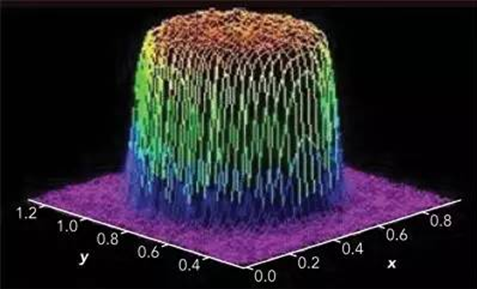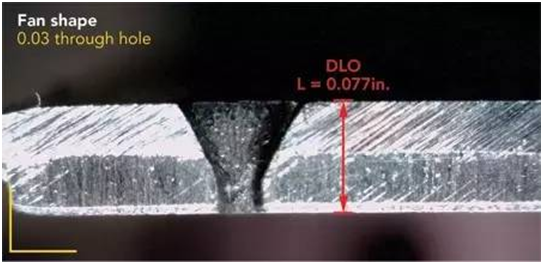 086-755-61282268
086-755-61282268 086-755-61282268
086-755-61282268
Nd: YAG pulsed lasers have been the mainstay of materials processing for decades and a significant portion of them have been used for more than 30 years. Among them, the wavelength of 1070 nm pulse laser is the most widely used, such as medical equipment, aviation, electronics and so on. In spite of this, in some respects, the laser still needs to be improved, such as high peak power, low average power, low electrical efficiency, unstable beam quality under power boost, and focused spot size approximating a Gaussian beam before obtaining a stable output Need several rounds of pulse preheating and more. However, despite all kinds of unsatisfactory, the laser still played a significant role for a long period of time. In aerospace, Nd: YAG pulsed lasers are more dominant and are used extensively for the cooling hole processing of various devices.
Why Fiber Laser
In early 2009, people in the materials processing industry began to look for pulsed lasers capable of delivering high peak powers and continuous lasers with higher power levels, typically 3 kW peak power and 300 average power W. Leap in technology spawned higher peak power and average power. Today, peak powers of up to 20 kW, average power of 2 kW, and ultra-high power continuous lasers are available. Constant upgrading of power, the fiber laser onto the aeronautic device processing stage.
Compared to conventional Nd: YAG lasers, fiber lasers have significant improvements in electro-optical conversion efficiency and beam brightness (single-mode or low-level operation) and do not require preheating. When power is changed, (As shown in Figure 1), or Gaussian mode, spot diameter is always stable as one, at the same time, higher pulse frequency, real-time parameter adjustment performance is also stronger. Because fiber lasers utilize a single emitter excitation, there is a qualitative leap over flashlamp lasers in terms of reliability, power stability, and flexibility.

Figure 1: Flat Top Mode
Fiber lasers are gaining more and more market share due to their flexible application methods, not only for new machine installations but also for upgrading existing production lines. All previous production systems that used Nd: YAG lasers could be converted to fiber lasers. As market demand evolves, high-power fiber lasers with peak powers up to 20 kW are now available (see table below).

The above peak power and average power have been able to cover a wide range of applications, from micro-machining to large-scale machining, from micro-drilling to large-scale drilling, thin and thick plate cutting, deep carving and other applications.
Drilling Requirements in the Aviation Field
Aerospace is undoubtedly another industry that has benefited greatly from fiber lasers. In today's aviation industry, a turbine engine may have as many as millions of holes, these holes are mainly used to help the device in the operation of the process of timely cooling. Hole thickness, angle, diameter, shape vary. The new fiber laser is a faster, more flexible, more stable, and more cost-effective option for drilling applications in the aerospace industry.
There are two main ways to produce aero-device cooling holes: one is to use multiple pulses to create a borehole (pulsed borehole) based on the desired aperture, and the other is to use a small spot to move the beam within a circular range Drilling (set of holes). Overall, the sleeve hole speed is slow, but the shape is more perfect. In some applications, only holes can be selected. These holes are usually 0.015-0.030 in diameter (Figure 2).

Figure 2: Pulsed drilling with 0.010 in on left and 0.030 in on right
There is a special need for drilling in the aeronautics field, which is the fan-shaped hole that connects the metering orifice (Figure 3). These scallops are cooling air outlets designed to divert the same flow of air to a larger area for better cooling. At present, the process of producing fan-shaped holes are mainly the following: The first is a small spot Q-switched laser + scanner. The scanner scans the orifice at the orifice. The second method is to reduce the spot size to create a taper, and then use the CNC sleeve shape, but this method is much slower than the "two-step" method of carrying the scanner; The third method is to use EDM drilling technology to add a fan-shaped hole after the formation of the restriction hole. It is important to note that when a fan-shaped hole is drilled, the thermal barrier coating needs to be stripped and thermal barrier coatings are present on most devices.

Figure 3: A .030 in Fan Hole Connecting Flow Limiter
Fiber Laser Drilling Applications in Aerospace
The advantages of fiber lasers over the Nd: YAG pulsed lasers are clear. First, the fiber laser's pump source is a diode rather than a flash, so a perfect square wave can be formed. Second, a flash-pumped Nd: YAG laser is slow to lift and therefore has a fraction of the laser energy below the target region's evaporation threshold , This part of the energy will melt the material, resulting in thermal barrier coating peeling. To meet the recast layer specifications, the pulse period must be less than 1 ms. At this point, fiber lasers have an absolute advantage because they produce square waveforms, so using a 10 ms pulse satisfies aerospace specifications for recast layers and cracking.
We use the combustion chamber as an example. With pulsed drilling, the combustion chamber rotates several turns during drilling, in which case it takes 5 pulses to drill through and 2 more pulses to form a fan hole. The maximum repetition frequency of this laser is usually 10 pulses / second. The fiber laser with a long pulse can be formed fan-shaped hole, and Nd: YAG laser with the same pulse period and pulse energy, the speed can be up to 10 times the original. Whether single or two long pulses, or multiple pulses, can get the same hole quality. In addition, instead of using multiple pulses at all times, fiber lasers can also adjust the pulse-on-time and post-penetration pulse cycles, which helps prevent damage to the body.
Fiber lasers feature flat-top mode output while Nd: YAG lasers have approximate Gaussian modes. Therefore, thanks to the flat-top mode, the former all the energy exceeds the evaporation threshold, while the latter a considerable part of the threshold below. Research shows that, under the same conditions to achieve the same drilling effect, the energy consumed by the fiber laser less, the reason is the square wave + flat-top mode. It is also because of this feature that fiber lasers are more efficient at drilling and have less thermal damage. Less thermal damage, coating peel and recast layer will be improved.
One of the reasons why Nd: YAG lasers have drawn much attention is their unique beam divergence properties, whose spot size can change as power levels increase or decrease, as long as they are refocused to achieve the desired Aperture. Some Nd: YAG lasers integrate an internal focusing telescope to change the beam divergence angle, but this adjustment requires the operator with a high degree of professionalism, time-consuming, but also the correct parameters, so many people are not optimistic This method. At this point, the fiber laser is just the opposite, because its focused shape is perfectly circular, so it does not change as power is raised or lowered, and if a telescopic telescope is placed in the system, Directly change the spot size when flying a hole. The range is usually 3-1.
Fiber lasers are far more flexible than Nd: YAG lasers due to the fact that the former's high-response diodes change the pulse period and power while drilling, allowing the operator to utilize different power levels and pulses Period, create the desired pulse sequence. For example, use low power, short pulses at the beginning of drilling, and then increase the power and pulse by sequence according to the specific drilling requirements. Since fiber lasers can adjust the spot size and pulse period (down to 10 ¦̀s) while delivering kilowatt-class peak power, a single machine is enough.
With the sleeve technology, fiber lasers can be processed 10 times faster than lamp-pumped Nd: YAG pulsed lasers. Furthermore, fiber lasers can be converted to continuous outputs up to 2 kW for high-speed cutting while flying drills. For some combustion chamber design, this data can be further enhanced. In summary, pulsed fiber lasers are ideal for cutting thicker plates and for high-speed drilling applications.
Fiber Laser and Production Systems
Another significant advantage of fiber lasers is their ease of integration with existing machines or robotic systems. Fiber laser power transmission is achieved through fiber optic cable, so whether it is an existing system upgrade, or a fresh installation, it's easy. Industrial robots connected to fiber lasers can be programmed to provide precise control so that one can build a new drilling system with less capital investment and a high degree of flexibility in the robot system. In addition, combining robots with six-axis systems also meets the accuracy requirements of industrial drill holes for aviation components. Until today, some large enterprises are still in-depth research, including the development of multi-axis machine and robot systems, the upgrading of existing production lines and so on.
Long pulsed fiber lasers can significantly improve the parameters of the cooling holes and therefore gain widespread interest in the aviation field. Drilling holes with fiber lasers results in faster, higher quality, more consistent hole behavior, lower operating costs, and the ability to create geometries or effects that were previously unattainable. Engine manufacturers are already fully aware of the advantages of long pulsed fiber lasers and introduced them into the production systems of different engine components, and this demand is bound to drive further advances in fiber laser processes.
Author: Bill Shiner, IPG Photonics Corporation, vice president of industry market
Update time:2017/10/10 12:52:07 ¡¾Print page¡¿ ¡¾Close¡¿Service
Hotline
086-755-61282268
0138098901257 * 24-hour service hotline
Mobile
Website

Sweep the access mobile site
Follow
WeChat

Follow official WeChat